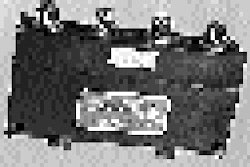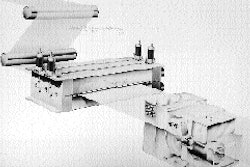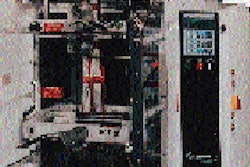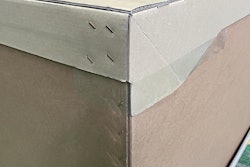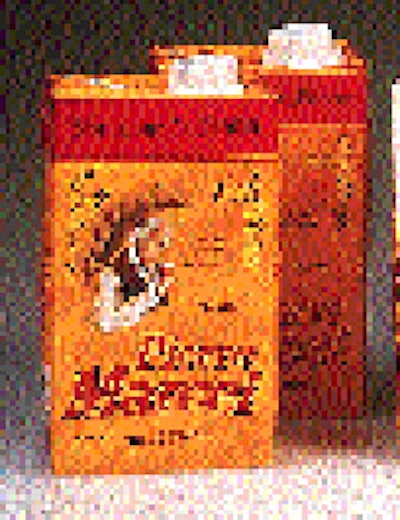
A little over a year ago, the beverage packer, which had been selling nonreclosable 1-L beverage aseptic brick packs in French Polynesia since '92, gained a competitor in aseptics. Pacific decided to one-up them by adding the screw cap fitment, beginning with its Vaianu brand orange nectar. The response was overwhelming, and Pacific never looked back. The roll-out of screw closure fitments to all its products--including wines and alcoholic drinks--is about two-thirds complete, and sales have doubled and in some cases tripled, says Tim Whittaker, director. "What we're finding now is that the products we haven't switched over to fitments are actually losing sales because people are preferring to buy fitment products instead."
The screw-cap fitment, while becoming more common for gabletop cartons, is believed to be one of the first for aseptics, though other aseptic systems use a snap reclosure of one kind or another.
Supplied by International Paper's Liquid Packaging Div. (Memphis, TN), the plastic fitment--IP declines to identify its composition--is a counter-rotating device designed to break the foil that seals the aseptic carton. IP's applicator was added downstream from Pacific's SA-50 aseptic form/fill/seal machine, also from IP. The downstream application process does not interfere with the aseptic packaging process.
The aseptic material, which Whittaker says is a standard aseptic paper/foil laminate, is modified in one spot to accommodate the closure. It's basically a matter of ensuring that no paper covers the foil layer in the spot where the fitment must be sealed.
Whittaker says the closure itself is applied via hot melt adhesive. "It's got a reasonably large flange, and we apply hot melt so that we're picking it up on the outside of that flange. That way, there's no glue going into the inside of the fitment," he says. "Obviously we've got to be real careful we get a good seal around the hole of the flange to ensure that we don't get any leaking."
The products sell for about $2. The addition of the fitment didn't cause a price increase. "The fitment doesn't add an enormous amount to the cost of the total package," says Whittaker. "Certainly for our marketplace we're very happy absorbing that extra cost." IP says there are no commercial applications yet in the U.S.
